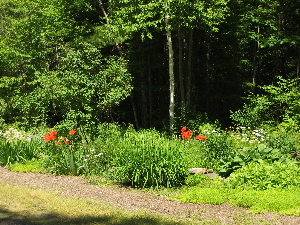IT'S RAINING
Spring is here! It's raining...just a soft rain. We were supposed to get thunderstorms and lots of rain, but that never materialized. That's a good thing because the rivers are swollen to overflowing and any excess rain would send them over their banks. This rain on the other hand will soak into the ground, recharge the aquifer's and give sustenance to all those plants needing it after a long, hard winter.
As I look out of our back windows, I am dismayed. We lost a lot of trees in bad weather. Then we had a bunch taken down to avoid damage to the house. We ran out of money and could not afford to have most of them removed, meaning it looks just AWFUL out there. There are trees all over and scarified land. The fellow that did the tree removal for us, took all the wood worth anything and left all the scrub. YUK! But, hey. I guess that's the way it works.
Anyway, I ordered tons of little trees and plants from the USDA that I hope to have my grandson help me plant. Then I will spread wildflower seeds all over and hope for the best. I'm too old and tired to do any more.
The trees are little and will take many years to come into their own. I probably won't live here much longer and someone else will be enjoying the fruits of our labor. You can be sure I'll come back to look at them out of curiosity to see how they are doing.





